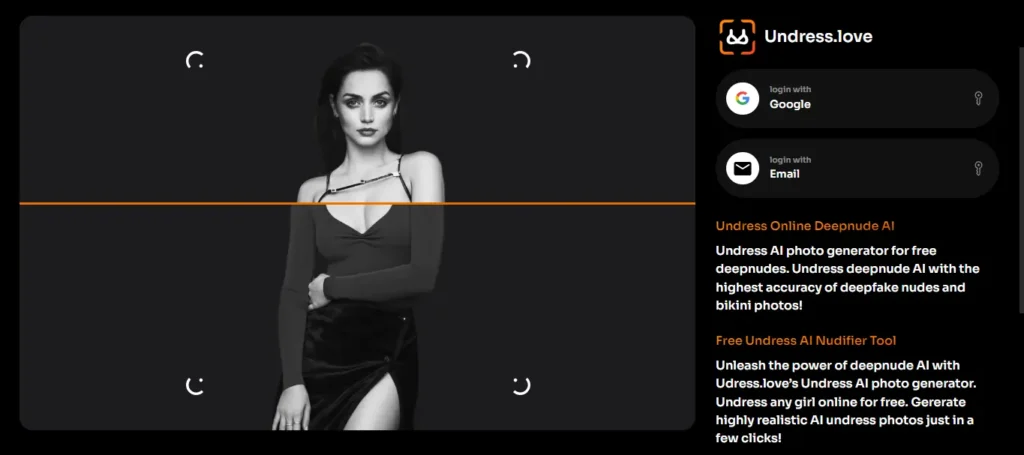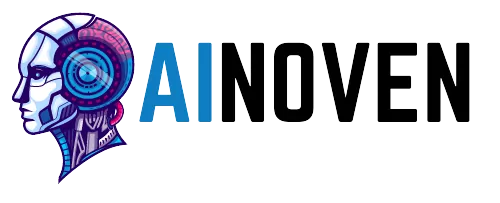Deepfake technology like AI clothing removal is seeing over 200,000 monthly searches, showing high demand. AI clothing removal sites are classified by Google Trends as “breakout” searches with exponential growth, enabled by advances in generative AI.
AI clothing removal, a rapidly evolving technology, leverages deep learning algorithms to digitally remove clothing from images. Tools like Undress.love, Nudify Online, and Candy AI are renowned for their accuracy in handling complex scenarios. These tools are used in various industries, including fashion and entertainment.
However, they also raise significant ethical concerns, particularly around privacy and consent. Misuse of these tools can lead to exploitation, harassment, and non-consensual explicit content creation. Despite these concerns, the future of AI clothing removal technology looks promising, with ongoing advancements in AI and machine learning.
As AI continues to advance, it's crucial to navigate its implications responsibly, prioritizing respect for privacy and consent.
What is AI Clothing Removal?

AI clothing removal is a technology that utilizes artificial intelligence, particularly deep learning algorithms, to digitally edit images by removing clothing from the subjects depicted. These algorithms are sophisticated enough to identify and manipulate the visual data corresponding to garments in a photograph, effectively rendering the subject as though they were not wearing any clothes.
The process involves training the AI on vast datasets of images, enabling it to understand and predict the shape and position of the human body underneath clothing. Once trained, the AI can apply this knowledge to new images, separating clothing from the body with surprising accuracy.
This technology has found applications in various sectors, such as fashion, where it can be used to create virtual dressing rooms, allowing customers to see themselves in different outfits without physically trying them on. It's also used in entertainment for special effects and in art for creative expression.
As the technology continues to develop, it's crucial to establish guidelines and regulations to prevent abuse. The conversation around AI clothing removal is not just about the technology's capabilities but also about the societal norms and legal frameworks that should govern its use.
How Does AI Clothing Removal Platforms Work?
The process begins with the AI analyzing the image using a deep learning model that has been trained on a vast dataset of images with clothing patterns, textures, and shapes. The AI algorithm detects clothing and works to separate it from the human figure in the photo.
Here's a breakdown of the steps involved:
- Image Input: A user uploads a photo to the AI clothing removal tool.
- Detection: The AI algorithm identifies the clothes within the image using pattern recognition.
- Analysis: The tool analyzes the detected clothing's texture, color, and shadows to understand how it interacts with the body.
- Removal: The AI then digitally removes the clothing, filling in the space with a guess of what might be underneath based on the surrounding skin tones and the body's contours.
- Output: The final image is produced with the clothing removed.
Deep learning and neural networks are at the core of these tools, enabling them to process images with a level of detail that traditional photo editing software cannot easily achieve. However, this technology's accessibility raises concerns, because it can be used by anyone who possesses a photograph, potentially without the subject's consent.
Use Cases of AI Clothing Removal tools in Various Industries
AI clothing removal technology is finding innovative applications across a range of industries. This tool streamlines processes, offers new insights, and provides novel solutions while facing the challenge of ethical use.
1. Fashion and Design Insights

In the world of fashion and design, AI clothing removal tools are revolutionizing the way designers conceptualize and showcase their creations. These tools allow professionals to digitally present clothing items, observing how they might appear without overlays or additional garments. This process offers valuable insights for designers, particularly in visualizing the final look of a garment.
| Industry | Application | Benefit |
|---|---|---|
| Fashion Design | Digital Showcase | Enables visualization of final garment look without additional layers. |
2. Film and Animation Innovation
For the film and animation sector, AI clothing removal technology fosters innovation in visual effects and post-production. It can be employed to create more realistic animations or to adjust wardrobe malfunctions in post-production, thereby enhancing the overall quality of the visual content.
| Industry | Application | Benefit |
|---|---|---|
| Film and Animation | Post-Production Enhancement | Corrects wardrobe issues and improves animation realism. |
3. Art Restoration and Preservation

In the realm of art restoration and preservation, AI clothing removal tools serve a unique purpose. They can be utilized to digitally modify or restore vintage photographs or paintings, focusing on the layers beneath the outer garments. This contributes significantly to artistic and preservation endeavors, allowing restorers to see past the surface.
| Industry | Application | Benefit |
|---|---|---|
| Art Restoration | Vintage Photo/Painting Restoration | Provides insights into underlayers for accurate restoration. |
4. Medical and Anatomical Education
AI clothing removal is proving to be a valuable asset in medical and anatomical education. By providing visual representations without clothing, these tools aid in enhancing clarity and precision for educational purposes. Students and professionals can gain a better understanding of human anatomy without the hindrances of clothing, leading to improved illustrative and educational experiences.
| Industry | Application | Benefit |
|---|---|---|
| Medical Education | Anatomical Illustration | Enhances understanding of human anatomy through clear, unclothed visual representations. |
Technological Capabilities and Limitations
Understanding the capabilities and limitations of this technology is crucial to grasp its potential and recognize the boundaries within which it operates.
Image Analysis and Pattern Recognition
AI clothing removal technology hinges on deep learning algorithms that can meticulously analyze photos and digitally remove clothing. These algorithms are a subset of neural networks, specialized in analyzing human figures and the various textures in images. These cutting-edge tools are trained on numerous images to detect and analyze patterns and textures, accurately identifying the clothing in an image.
The sophistication of the pattern recognition in these tools allows for the identification and differentiation between clothing and skin, although the accuracy can be influenced by the complexity and variety of the clothing patterns.
Quality Factors and Output Accuracy
The quality of the output in AI clothing removal is contingent on several factors, with image quality and the algorithms' technical limitations being at the forefront. While leading AI clothes remover sites offer high-resolution outputs and fast processing, the accuracy of clothing removal varies.
The table illustrates how these factors can affect the accuracy of AI clothing removal tools.
| Factor | Impact on Output Accuracy |
|---|---|
| Image Resolution | Higher resolution can improve accuracy |
| Clothing Complexity | Simple patterns are easier to process |
| Lighting and Shadows | Uniform lighting enhances accuracy |
| Algorithm Training | Extensively trained algorithms perform better |
Top AI Clothing Removal Apps
Here's a rundown of some of the top AI clothing removal apps available:
1. Undress.love

Undress.love is an AI-powered platform for seamless face swapping in photos and videos. It utilizes advanced deep learning algorithms to digitally replace faces, enabling realistic and natural-looking transformations.
Pricing: Undress.love offers both free and paid plans starting from $5.49.
2. Nudify Online

Nudify Online is an AI clothing removal tool that leverages deep learning to remove clothes from images. It provides options to generate nude or bikini images based on user preferences.
Pricing: Nudify.online offers both free and paid plans with pricing ranging from $10.99 per month to $45.99 per month.
3. Candy AI

Candy AI allows users to create customized AI companions for conversations and interactive experiences. It offers anime and realistic character styles.
Pricing: Offers basic free plan and full experience plan plan starting from $5.99/mo (Yearly).
User Experience and Interface Design
User experience is a critical aspect of AI clothing removal applications. The Clothes Removal App, for example, is designed with a user-friendly interface that simplifies the process of clothing removal, making it accessible for users with varying degrees of technical proficiency.
A well-designed interface should provide users with intuitive controls and feedback mechanisms to experiment with the clothing removal process effectively. The goal is to ensure that users can achieve their desired outcomes with minimal frustration and a short learning curve.
AI clothing removal technology has also been suggested to enhance e-commerce experiences by enabling customers to visualize how clothes would look on them without the need for trying them on.
Ethical Considerations for Usage of AI Clothing Removal Tools
AI clothing removal tools, while innovative, pose significant ethical challenges. Here are the key considerations:
- Consent and Privacy Concerns: AI clothing removal must be consensual to protect individual privacy and prevent exploitation.
- Potential for Misuse and Abuse: There's a high risk of misuse, such as creating non-consensual explicit content, which can cause severe psychological harm.
- Legal Implications and Regulations: Laws are evolving to address the complex issues of privacy and consent in AI clothing removal, with variations across jurisdictions.
- Safe and Responsible Development: Developers must prioritize ethical AI development to ensure safety and responsibility in the use of clothing removal technologies.
- Setting Ethical Standards: Clear ethical guidelines are necessary for developers to ensure AI clothing removal tools are used legally and ethically.
- Oversight Mechanisms: Effective oversight is needed to ensure AI clothing removal tools adhere to ethical and legal standards.
- Encouraging Ethical Practices: Promoting responsible use and content moderation is essential to maintain a respectful digital environment.
Risks and Precautions of AI Clothing Removal Technology
With the advent of AI clothing removal technology, it is crucial that users are aware of the risks associated with such tools and take appropriate precautions. The following sections outline key considerations for avoiding malware, protecting privacy, ensuring responsible content sharing, and understanding content moderation on platforms.
Avoiding Malware and Protecting Privacy
AI clothing removal tools can potentially expose users to malware and privacy breaches. To mitigate these risks, users should only download these tools from reputable sources. Regular software updates can fix security vulnerabilities, while reliable antivirus software can detect and prevent malware threats. Reviewing and adjusting privacy settings on social media and other platforms can also help control the visibility of personal information.
Responsible Content Sharing
The unrestricted use of AI clothing removal tools can lead to the dissemination of inappropriate content, impacting the integrity of online communities and individuals' well-being. Users should only share content with explicit consent from the individuals involved and familiarize themselves with the content policies of each platform. Reporting mechanisms should be used to flag inappropriate content.
Content Moderation on Platforms
Robust content moderation systems are essential to prevent the spread of illicit content generated by AI clothing removal tools. Users should understand the moderation policies on different platforms and report any content that violates these policies or compromises the privacy and dignity of individuals.
Future Trends in AI Clothing Removal
The future of AI clothing removal technology is poised for significant advancements, with researchers focusing on developing algorithms capable of handling more complex tasks. These improvements include enhanced edge detection, texture reconstruction, and intelligent analysis of clothing folds, promising more accurate and realistic results.
Moreover, The technology has significant potential for integration with emerging technologies like virtual reality (VR) and augmented reality (AR). This could provide more immersive simulated clothing experiences, such as virtual fitting rooms.
As AI and machine learning continue to evolve, these technologies will offer more sophisticated tools for both personal and professional use, while also raising important questions about privacy and ethical use.
Conclusion
In conclusion, the future of AI clothing removal technology is promising, with advancements in AI and machine learning paving the way for more complex and accurate capabilities. The potential integration with VR and AR technologies could provide immersive simulated clothing experiences, revolutionizing industries like fashion and entertainment.
However, as this technology evolves, it's crucial to navigate its implications responsibly. Ethical considerations, particularly around privacy and consent, must be prioritized to ensure the technology is used appropriately.
As we continue to innovate, we must also strive to maintain public trust and adhere to ethical standards, ensuring that the benefits of this technology are realized without compromising individual rights and societal norms.
Read More:









